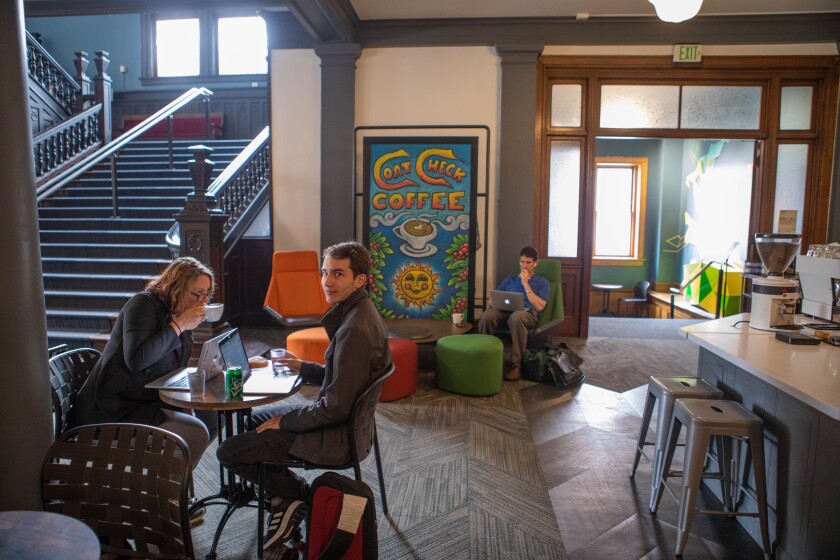I preferred the 69-cent bottomless cup of coffee at the Waffle House, but the Runcible Spoon was the Midwest’s first coffee microroaster. Fourth Street had a variety of ethnic restaurants in a state where that was rare. The Snow Lion was at the time one of only two Tibetan restaurants in the country. (The Dalai Lama’s brother had lived in Bloomington and was a founder of a Tibetan cultural center there.) Mother Bear’s pizza boasted of having won an award as the fourth best in the nation. Bloomingfoods was a food co-op that had been founded in the 1970s. Add to all this the arts, particularly from IU’s world-renowned school of music, and it was a very special place.
The same was true of many college towns at that time. They boasted amenities, culture and quality of life that far outclassed the majority of American communities in the 1980s era of mass consumer culture.
College towns retain their good reputations today. And they remain high-amenity locations. But the rest of the country has caught up with them over the past generation. Today, good coffee, great beer, diversity, ethnic restaurants, farmers markets, specialty grocery stores and art galleries are ubiquitous in much of small-town America, and in big-city neighborhoods as well. The things that once made college towns unique are no longer so special.
Today, some formerly bleak big cities now outclass college towns, in part due to their sheer size. When I graduated from college, moving to Indianapolis would have been like getting sent to Siberia. Today, Indianapolis has seen an explosion of urban development and new amenities. It has more and better amenities in some ways than even Chicago did when I moved there after graduation in the early ‘90s. And it has clearly surpassed Bloomington in both the quantity and quality of what it offers.

Laura Watilo Blake/Flickr
The same is true for many other cities. Nashville was a sleepy, overgrown small town not that long ago. Des Moines was a staid state capital. Milwaukee was lost in Chicago’s shadow. Today, all have amenities that you would once have had to go to someplace like a college town to get.
What helped make college towns so attractive is also hurting their ability now to respond to market challenges. Many of the great qualities of these towns were created by baby boomers, often counterculture influenced, who stayed on or were attracted to these places after attending school in the '60s and '70s. They frequently had a strong environmental ethos, but one that today has manifested itself in an anti-development sentiment that makes new housing difficult to build. As a result, many college towns have become very pricey.
This has changed the equation of desirability for these places. Not only are their amenities much less special than they used to be, they are expensive to boot. They can’t simply attract people based on the superiority of their environments.
These major college towns won’t be dying anytime soon. The presence of the colleges alone will see to that. And in a country where there’s a shortage of high-quality locales at a reasonable price point, the market will continue to buoy these places. The number of high-amenity places has expanded a lot, but the number of upper-middle-class households with a taste for the finer things in life has grown even more. The post-pandemic governance failures of too many big cities also works to the advantage of college towns.
But the simple reality is that college towns are no longer oases of cool in a mass market society. They are small pieces in a much larger mosaic of high-amenity places to live in America.













